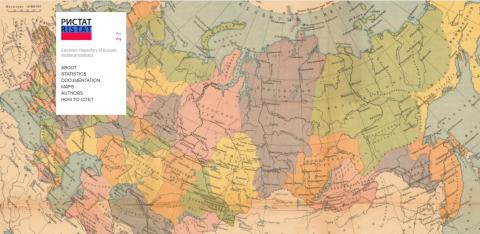
Russian history has so far played a rather modest role in the dynamically expanding field of knowledge known as global history. This was due in the very first place to the absence of good and readily accessible data in the data-hubs and large data-sets that have been instrumental in the rise of the discipline. This in spite of the fact that the scope and quality of Russian statistics of the past few centuries are of exceptionally high standards compared to many other countries.
The New Economic School (Moscow) and the International Institute of Social History (Amsterdam) took up the challenge to bring Russian data to a global audience by bringing them online. Standardized, well-annotated, and with a regional break-down, essential data are made available on population, labour, industrial output and agricultural output for five cross-sections of Russian history of the 18th-21st centuries. The repository caters to the needs of the scholarly community, teachers and students in the social sciences and humanities, and to comparative and transnational research agendas on social and economic development.
The dataset is available here: https://ristat.org/
***
The repository caters to the needs of the scholarly community, of teachers and students in the social sciences and humanities in higher education, and aims to provide the basis for an informed public debate on Russia's past and present social and economic performance. Data are available online for all interested users, free of charge.
The repository provides regional level data for the territory of the current Russian Federation over the last two centuries (1800-2000), standardised to facilitate access and to enable comparative research over time and across space. Data are gathered on a standard programme, along seven principal lines of inquiry (population, labour, industrial output, agricultural output, services, capital, land) and for five cross-sections of Russian history (1795, 1858, 1897, 1959, 2002).
By systematically making available data with a regional breakdown the repository intends to further the development of regional perspectives on Russian history and enhance the integration of Russian cases in the rapidly evolving field of transnational history.
Currently, data are available on population, labour, agricultural and industrial output. Further data will be made accessible on the site after completion of the data-sets.
For further information, please consult the Introduction to the Electronic Repository of Russian Historical Statistics:
